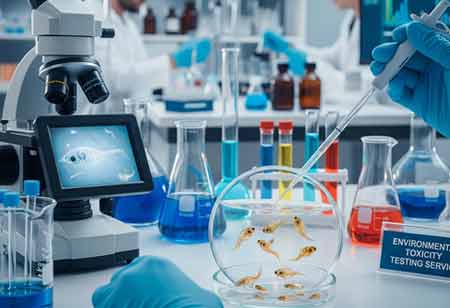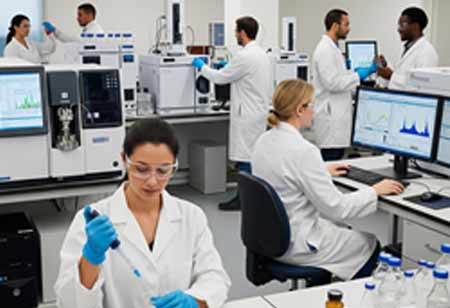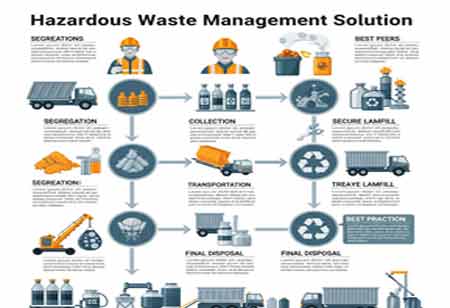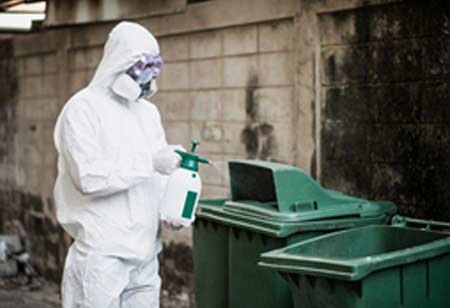Thank you for Subscribing to Environmental Business Review Weekly Brief
Adaptive Testing Services Reshaping Environmental Accountability
Environmental toxicity testing is evolving into a strategic, sustainable, and intelligent service model, offering real-time insights and industry-specific value.

By
Environmental Business Review | Wednesday, October 08, 2025
Stay ahead of the industry with exclusive feature stories on the top companies, expert insights and the latest news delivered straight to your inbox. Subscribe today.
Environmental toxicity testing services are undergoing a period of intense transformation, driven not only by tighter regulations but also by the growing global urgency for environmental accountability. What was once a linear service focused on simple pass-fail parameters has now matured into a deeply integrated component of operational and sustainability strategy. Testing services are no longer peripheral; they're increasingly central to how businesses understand their environmental footprint and anticipate regulatory shifts. Market forces, investor scrutiny, and cross-border transparency are raising the stakes, encouraging testing providers to elevate their practices, rethink old models, and adopt frameworks that are simultaneously agile, predictive, and scalable.
Digital Intelligence is Driving Market Reinvention
Recent developments in the industry reveal a decisive shift toward intelligence-led testing ecosystems. Artificial intelligence, machine learning, and automated data analytics are being deployed across various points in the testing chain. These tools are no longer limited to backend analysis; they now play a role in sampling strategy, test design, and forecasting. Real-time monitoring has become an integral capability, allowing continuous data collection from remote environments, industrial sites, and sensitive ecological zones.
High-throughput screening and computational toxicology are increasingly replacing slower, resource-heavy techniques. With predictive modeling, test providers can simulate how contaminants might behave in a given environment without needing physical experiments for every scenario. Such capabilities reduce turnaround time, minimize waste, and create opportunities to proactively flag emerging threats before they evolve into regulatory violations.
The integration of these systems with client-side dashboards enables stakeholders to track environmental data in real-time, making testing services more transparent and aligned with broader enterprise risk management strategies. Testing is no longer about static compliance; it's about empowering smarter, faster decisions with contextual insight.
Infrastructure Barriers Meet Scalable Innovation
Cost remains a primary constraint, particularly for labs aiming to modernize their operations with next-generation equipment or high-performance computing systems. The investment required to stay current can be substantial, especially in areas where client budgets remain flat or demand is sporadic.
Equally significant is the global shortage of highly trained professionals. Toxicity testing now demands cross-disciplinary knowledge that spans environmental science, data analysis, and regulatory law, an intersection that is difficult to staff without targeted development programs. Smaller laboratories often struggle to recruit and retain specialists who can effectively interpret complex test results and communicate regulatory implications to clients.
There's also a persistent issue of fragmentation in international standards. Varying testing protocols and inconsistent recognition of lab accreditations across countries present hurdles to scaling services across regions. Companies operating in multiple jurisdictions often require multiple tests for the same sample to comply with local regulations, which adds cost, complexity, and redundancy.
Many service providers are utilizing modular testing infrastructures—portable, scalable units that can be integrated into client operations or deployed closer to the source of contamination—to address these issues. Some are building shared resource networks that allow smaller labs to access specialized equipment without owning it outright. Others are leveraging virtual laboratories, where raw data is uploaded and processed in centralized AI-driven environments, eliminating the need for expensive, localized computing setups.
Industry-specific training academies and public-private partnerships are also gaining momentum, accelerating talent development through short courses, hands-on modules, and hybrid education models tailored to this evolving sector. These innovations help bridge structural gaps, allowing the sector to move toward a more resilient and distributed model of service delivery.
Strategic Opportunities Expand Across the Value Chain
For forward-looking stakeholders, the next horizon lies in developing services that extend beyond compliance and deliver measurable strategic value. There is a growing demand for sustainability-aligned testing approaches that consume less energy, generate minimal waste, and utilize biodegradable reagents. As clients become increasingly aware of the environmental impact of testing, providers are being encouraged to decarbonize their operations. In response, laboratories are exploring low-carbon instruments, solar-powered infrastructure, and closed-loop water systems that significantly reduce operational footprint while maintaining analytical precision.
Decentralization is emerging as a transformative force in the industry. Mobile toxicity testing units and point-of-use diagnostics provide practical and responsive alternatives to centralized laboratory models. These innovations reduce delays, enable real-time decision-making, and bring environmental monitoring closer to the source of potential contamination. In parallel, AI and sensor-driven platforms are giving rise to new service models that extend beyond periodic testing. Providers are embedding sensors on-site, delivering continuous feedback, and generating predictive reports that adapt dynamically to changing environmental conditions.
There is also growing traction for customized testing regimes tailored to the specific requirements of distinct industries such as pharmaceuticals, advanced manufacturing, and personal care. Aligning toxicity testing services with sector-specific product lifecycles enhances value for clients and reinforces the role of providers as strategic partners. As the industry evolves toward agile, digital-first ecosystems, those who embrace innovation through modular systems, intelligent monitoring, and green practices are positioning themselves at the forefront of environmental intelligence. Such adaptability is essential for meeting future expectations with confidence and credibility.





